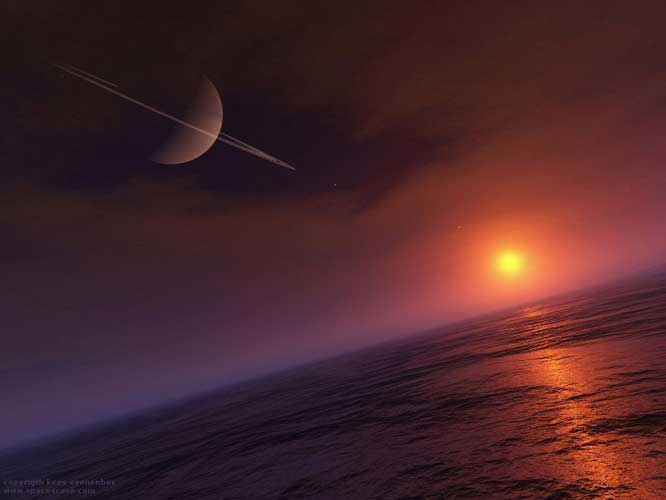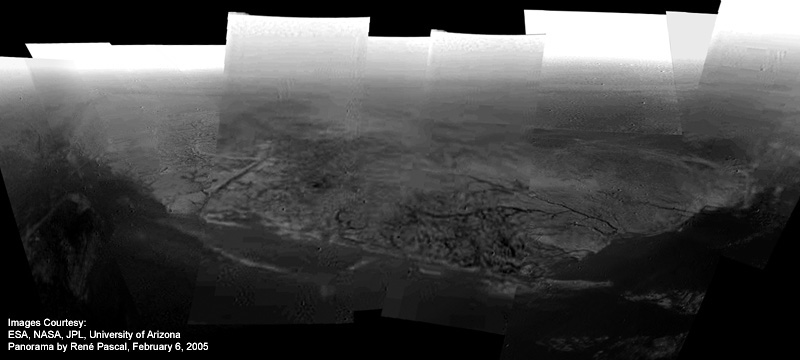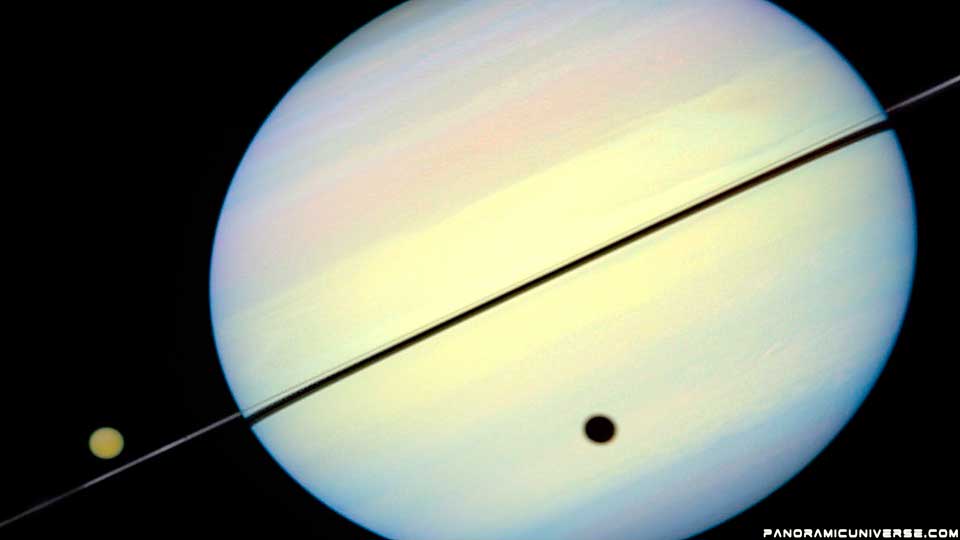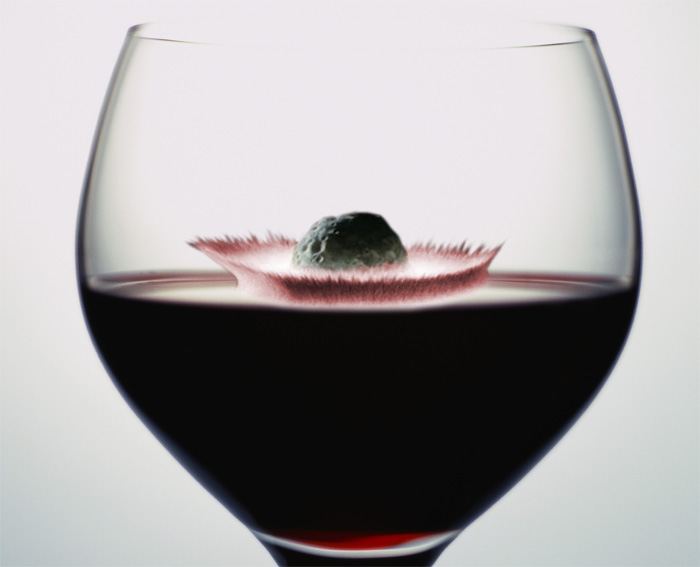Home, Sweet, Home?
Earth-Like Atmosphere Found On Saturn’s Titan Moon
Adding to the mystery of the planet Saturn, it now appears its moon Titan may be more like Earth than previously thought, given its layered, Earth-like atmosphere. So reports SPACE.com’s Charles Q. Choi.
Saturn’s largest moon, Titan is the only moon known to have a dense atmosphere. A better understanding of how its hazy, soupy atmosphere works could shed light on similar ones scientists might find on alien planets and moons. However, conflicting details about how Titan's atmosphere is structured have emerged over the years.
The lowest layer of any atmosphere, known as its boundary layer, is most influenced by a planet or moon's surface. It in turn most influences the surface with clouds and winds, as well as by sculpting dunes.
"This layer is very important for the climate and weather--we live in the terrestrial boundary layer," said study lead author Benjamin Charnay, a planetary scientist at France's National Center of Scientific Research.
The Titan Landscape as seen by the Huygens probe after a two-and-a-half hour descent through a thick atmosphere of nitrogen laced with methane. January 17, 2005Earth's boundary layer, which is between 1,650 feet and 1.8 miles (500 meters and 3 kilometers) thick, is controlled largely by solar heat warming the planet's surface. Since Titan is much further away from the sun, its boundary layer might behave quite differently, but much remains uncertain about it--Titan's atmosphere is thick and opaque, confusing what we know about its lower layers.
For instance, while the Voyager 1 spacecraft suggested Titan's boundary layer was about 2 miles (3.5 km) thick, the Huygens probe that plunged through Titan's atmosphere saw it as only about 1,000 feet (300 m) thick.
To help solve these mysteries about Titan's atmosphere, scientists developed a 3D climate model of how it might respond to solar heat over time.
A panorama of the Titan shoreline comprised of multiple Huygens images, by René PascalTheir simulations revealed the lower atmosphere of Titan appears separated into two layers that are both distinct from the upper atmosphere in terms of temperature. The lowermost boundary layer is shallow, only about 2,600 feet (800 meters) deep and, like Earth's, changes on a daily basis. The layer above, which is 1.2 miles (2 kilometers) deep, changes seasonally.
The existence of two lower atmospheric layers that both respond to changes in temperature help reconcile the formerly disparate findings regarding Titan's boundary layer, "so there are no more conflicting observations," Charnay said.
Titan in orbit around SaturnThis new work help explains the winds on Titan measured by the Huygens probe, as well as the spacing seen between the giant dunes on Titan's equator. Also, "it could imply the formation of boundary layer clouds of methane on Titan," Charnay said. Such clouds were apparently seen before but not explained.
In the future, Charnay and his colleagues will include how methane on Titan moves in a cycle from surface lakes and seas to atmospheric clouds, just as water does on Earth. "3D models will be very useful in the future to explain the data we will get about the atmospheres of exoplanets," Charnay said.
Charnay and his colleague SÇbastien Lebonnois detailed their findings in the Jan. 15 issue of the journal Nature Geoscience.
***
Cheers! Meteorite Wine Comes To Market
It’s different, to be sure. According to Jennifer Quellette at Discovery News, Ian Hutcheon, an expat Englishman now working in Chile, has developed a new wine aged with a meteorite that fell to Earth from space. Meteorite, as the wine is called, is an outgrowth of the vintner’s passion for astronomy. Hutcheon says the infusion of a bit of meteorite gives the wine a “livelier” taste.
At present Meteorite can be purchased only at Hutcheon’s own observatory, the Centro Astrononomica Tagua Tagua, although he says he’s hoping to export it worldwide in the near future.
According to Quellette’s report:
The meteorite in question, Hutchinson claims, is roughly three inches in diameter, 4.5 billion years old, and likely hails from the asteroid belt between Mars and Jupiter. It crashed in Chile's Atacama Desert some 6,000 year ago.
That's how long it took to complete something called "malolactic fermentation": it's a process that takes place after the primary fermentation. The first stage of the wine-making process after harvesting the grapes, that is, which in this case come from Hutchinson's Tremonte Vineyard southwest of Santiago—converts grape sugar into alcohol via yeast. This takes around 25 days.
The next stage, malolactic fermentation, is achieved by lactic acid bacteria, notably Oenococcus oeni. There are others, of course, but the Aroma Dictionary iainforms me that this bacteria in particular "typically processes substances that have pleasant and wine sympathetic aromas and flavors." And those flavors are imparted to the wine as it ages in a wooden barrel.
(Here's an extra bit of wine making trivia, just for fun. Malolactic fermentation is generally reserved for dry white wines and "full-bodied" dry red wines; it can ruin your average Riesling. And you don't want those little bacteria to keep fermenting once the wine has been bottled, lest it smell—and taste—a bit like cured meat when it's opened.)
So now, in addition to space beer, astronomy buffs have their very own brand of wine. "When you drink this wine, you are drinking elements from the birth of the solar system," Hutchinson said, adding that he wanted "to give everybody the opportunity to touch something from space: the very history of the solar system, and feel it via a grand wine."
Founder/Publisher/Editor: David McGee
Contributing Editors: Billy Altman, Laura Fissinger, Christopher Hill, Derk Richardson
Logo Design: John Mendelsohn (www.johnmendelsohn.com)
Website Design: Kieran McGee (www.kieranmcgee.com)
Staff Photographers: Audrey Harrod (Louisville, KY; www.flickr.com/audreyharrod), Alicia Zappier (New York)
E-mail: thebluegrassspecial@gmail.com
Mailing Address: David McGee, 201 W. 85 St.—5B, New York, NY 10024






